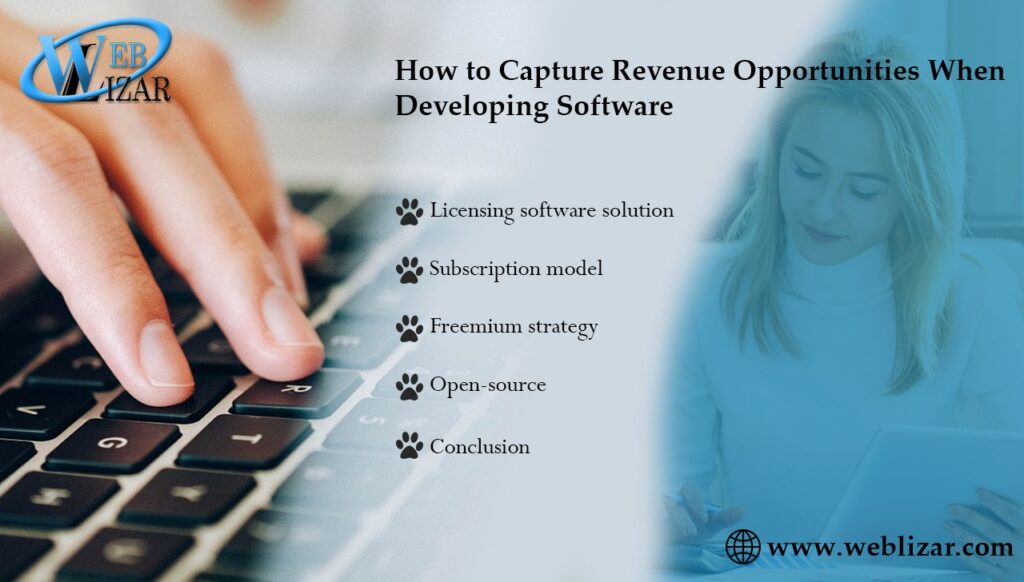How to Capture Revenue Opportunities For Developing Software: There isn’t a feeling quite like seeing the development software to its completion. However, it can be more rewarding if your intellectual property attracts clients who are willing to pay for its use. This is where software monetization comes into play. Below, we’ve covered some effective monetization software
How to Capture Revenue Opportunities For Developing Software
Strategies that you can implement to ensure that you’re able to capture the desired revenue opportunities for your digital products. Continue reading if you want to learn more.
Also Read: Benefits of Using Supportability Analysis Software 2024
Licensing software solution
Software licenses are legal tools that govern the application’s use and distribution. Often, licensing models protect intellectual properties in object and source code forms.
It’s a popular strategy used to protect and safeguard digital products against potential infringements, including but not necessarily limited to unauthorized duplication, software piracy, sharing the program, and utilizing different creative strategies in pricing like premium and penetration pricing.
Moreover, licensing models can enable software developers and suppliers to maintain ownership of their products until end-users meet the licensing requirements to utilize them.
Subscription model
An excellent strategy for B2C and B2B, the subscription model is one of—if not the most—effective monetization solutions for software, as it continuously drives revenue via recurring fees at specific intervals of time, such as yearly or monthly. So popular is this strategy that some sources claim that most subscription-based enterprises were relatively unchanged and unaffected by the global COVID-19 pandemic.
Some have even reported accelerated growth. Some examples of this strategy are video streaming services like Netflix. While their revenue from ads is lower than those offering paid and free versions, their ad-free value proposition offers them better results.
Suggested Post: Benefits of Mobile App Development for Business In 2024, Important Updates
Freemium strategy
As its name implies, the freemium strategy gives end-users access to specific features for free while locking other content behind a paid wall.
This model helps reduce the purchase barriers in an oversaturated market, encouraging more users to try the product. Additionally, the acquisition of prospective clients through marketing, sales, and ads often leads to high costs.
Through a freemium monetization tactic, it’s possible to reduce these expenses substantially. Its primary goal is convincing the growing customer base to try out the software’s free version first and encourage them to invest in all its functionalities. Whether in paid or free versions, it’s a good strategy to keep users engaged.
Open-source
A developer-focused strategy, the open-source model, enables developers to make their codes available for others to control, customize, and access. It’s essentially free, helping end-users to do their tasks and customize them to meet the needs of their businesses.
Monetization begins to apply when the users require additional premium features, technical support, SaaS, and hosting services. With this model, you can create engaging user experiences by allowing them to make contributions to the software’s improvement.
Also Check Out: Business Development Plan to Brainstorm Your Way to Success
Conclusion – Capture Revenue Opportunities
In any business, revenue addresses all issues. And software development is no exception. These are but a few of the many ways software companies can capture opportunities for generating more revenue, and many more strategies can be employed. The key is to find one that best suits your products and understand how market trends react to similar applications.
FAQs”
How do you describe a revenue model?
A revenue model outlines how a business generates income. It details the sources of revenue, such as product sales, subscriptions, advertising, or licensing fees. The model typically includes pricing strategies, customer segments, and revenue streams to sustain and grow the business.
What is revenue model in a project?
In a project context, a revenue model specifies how the project will generate income or funding. It outlines the sources of revenue, such as grants, sponsorships, sales of products or services, crowdfunding, or licensing agreements. The revenue model helps project managers plan and sustain the project financially.

